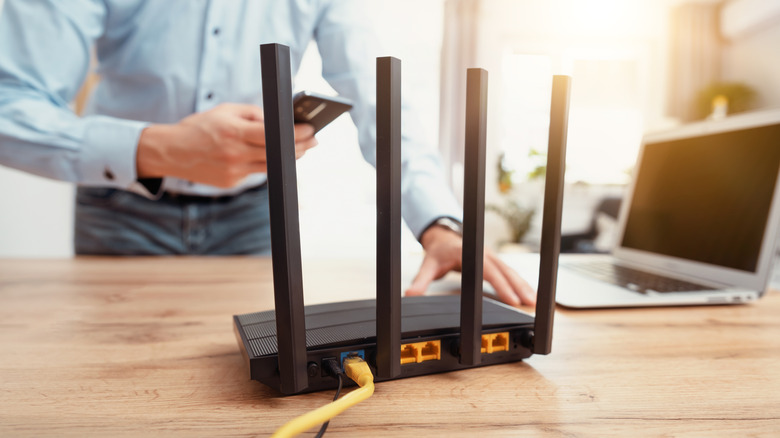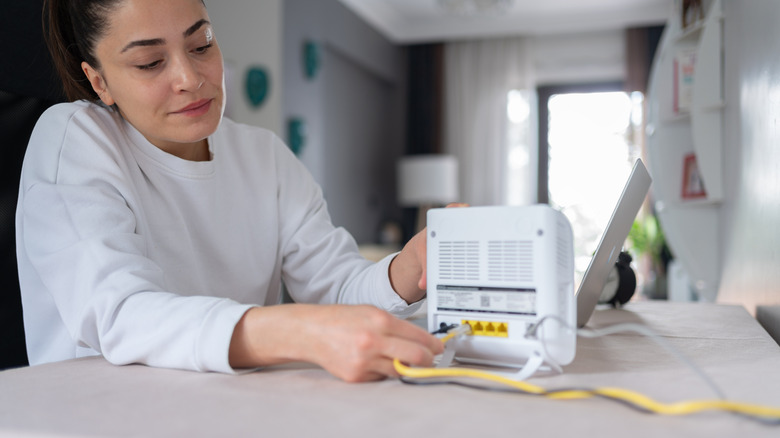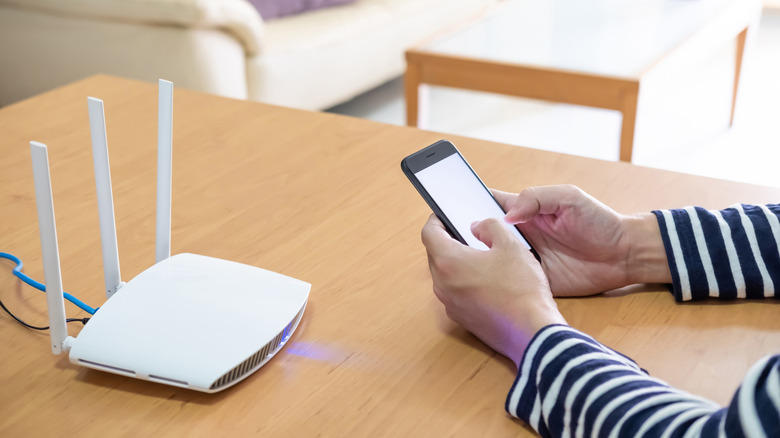The Clever Way You Could Make Use Of Your Old Wi-Fi Router
It's a familiar scenario: you bought a top-tier Wi-Fi router, yet there's still that one corner of the house where the signal is weak. Even the best routers have their limits, but the signal has to deal with walls, floors, and other obstacles that can weaken its strength. However, a Wi-Fi extender is a simple solution for this modern problem, as it can boost your signal to those dead zones. If you happen to have an old router lying around, you can easily repurpose it into an extender.
It's an easy way to reuse old tech that's gathering dust instead of condemning it to eternity in a landfill. A Wi-Fi extender works by sitting roughly halfway between your primary router and the area with a weak signal; this allows the extender to still receive a good signal, then rebroadcast it to that hard-to-reach area, making it easier to keep your smart home system up and running.
You have two options for setting up your old router as your new Wi-Fi extender. One way is to physically connect your old router to your primary one via a wired Ethernet connection. The other is to enable Repeater Mode for a wireless signal extension. This beats makeshift solutions like using aluminum foil for a weak Wi-Fi signal. The best part is, you do not need to be super tech-savvy to set this up.
The wired Ethernet connection method
Setting up your old router as an access point is a simple way to push your Wi-Fi signal further on your property. You will need an Ethernet cable long enough to reach halfway between your primary router's location and the weak signal area. Next, reset your old router using the reset button, typically located at the rear of the device. Make sure you've updated the router's firmware so that everything is running on the newest and best version of its software.
From there, all you need to do is follow some basic steps. First, plug one end of the Ethernet cable into your primary router's LAN port and the other end into the WAN port of your old router. Power on your old router and connect it to your computer either by a wireless or wired connection. From there, log in to your old router's settings page using the info on its bottom label. Go to Wireless Settings and select AP Mode. Hit Apply to save these changes, and you are set.
Do note that these steps are merely general guidance, and that they may vary slightly for you depending on which brand and model of router you own. If you get stuck or have questions, we recommend reviewing the user manual for instructions on enabling access point mode. They should be in either the physical manual or the digital one on the manufacturer's website.
The wireless repeater mode method
A wired extender option will work fine for most people. However, a wireless setup is possible and recommended if you prefer a less visible solution, especially if you use creative ways to hide your wireless router.
The first step is to connect your computer to the old router either by Wi-Fi or a wired LAN (Ethernet) connection. Open your preferred web browser and go to your router's settings page; again, the login information for this should be on the underside of the router. Connect to your Wi-Fi network just like you would with your laptop or smartphone, select it from the list, and enter your password. Name your new repeater network, set a password, and click Apply or Save to finish.
Regardless of which method you choose to set up your new Wi-Fi extender, you can enjoy faster speeds anywhere you need them. You should also be able to move them around, but mind your Ethernet cord length if that is the method you chose. It is also worth noting that this second router will be both receiving and sending simultaneously, which means the signal speed it spits out will not be as fast as that of your primary router. However, a moderate strength signal is better than no signal at all.


